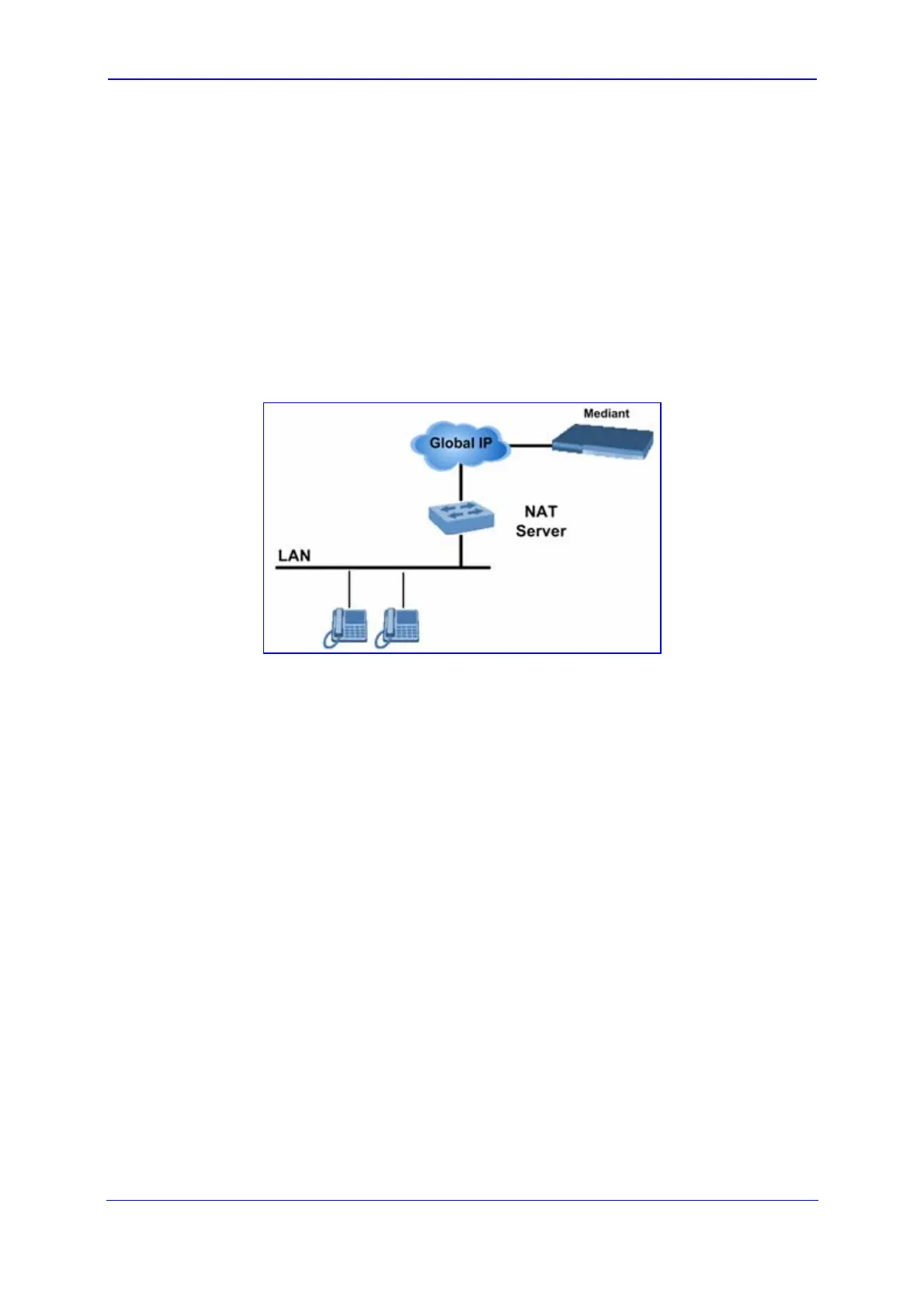Version 5.8 543 October 2009
SIP User's Manual 10. Networking Capabilities
10 Networking Capabilities
10.1 NAT (Network Address Translation) Support
Network Address Translation (NAT) is a mechanism that maps a set of internal IP
addresses used within a private network to global IP addresses, providing transparent
routing to end hosts. The primary advantages of NAT include (1) Reduction in the number
of global IP addresses required in a private network (global IP addresses are only used to
connect to the Internet); (2) Better network security by hiding its internal architecture.
The following figure illustrates the device's supported NAT architecture.
Figure 10-1: NAT Functioning
The design of SIP creates a problem for VoIP traffic to pass through NAT. SIP uses IP
addresses and port numbers in its message body and the NAT server can’t modify SIP
messages and therefore, can’t change local to global addresses. Two different streams
traverse through NAT: signaling and media. A device (located behind a NAT) that initiates a
signaling path has problems in receiving incoming signaling responses (they are blocked by
the NAT server). Furthermore, the initiating device must notify the receiving device where to
send the media.
To resolve these issues, the following mechanisms are available:
First Incoming Packet Mechanism (refer to ''First Incoming Packet Mechanism'' on
page 543)
RTP No
-Op packets according to the avt-rtp-noop draft (refer to ''No-Op Packets'' on
page 544)
For info
rmation on SNMP NAT traversal, refer to the Product Reference Manual.
10.1.1 First Incoming Packet Mechanism
If the remote device resides behind a NAT device, it’s possible that the device can activate
the RTP/RTCP/T.38 streams to an invalid IP address / UDP port. To avoid such cases, the
device automatically compares the source address of the incoming RTP/RTCP/T.38 stream
with the IP address and UDP port of the remote device. If the two are not identical, the
transmitter modifies the sending address to correspond with the address of the incoming
stream. The RTP, RTCP and T.38 can thus have independent destination IP addresses and
UDP ports.

